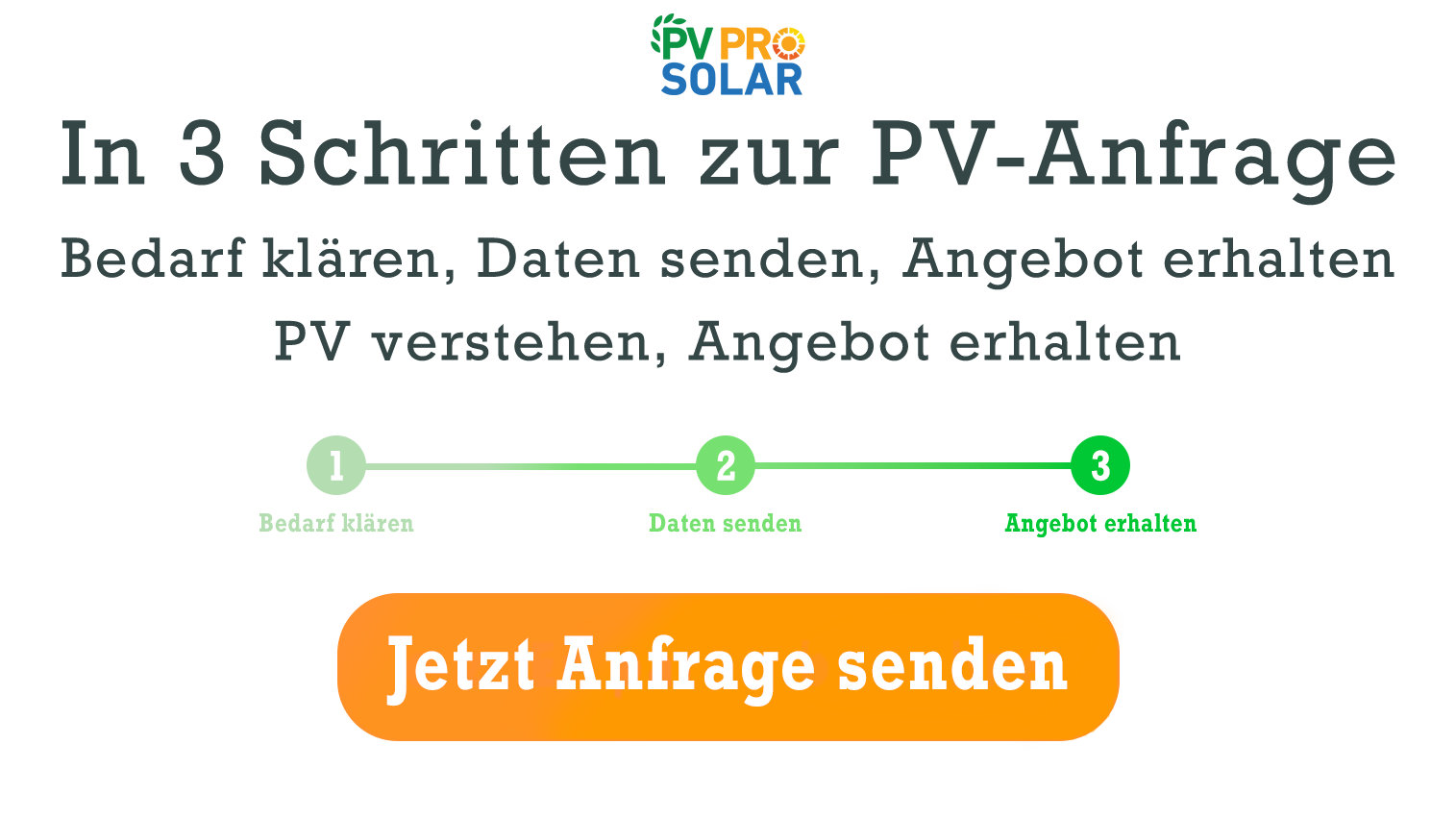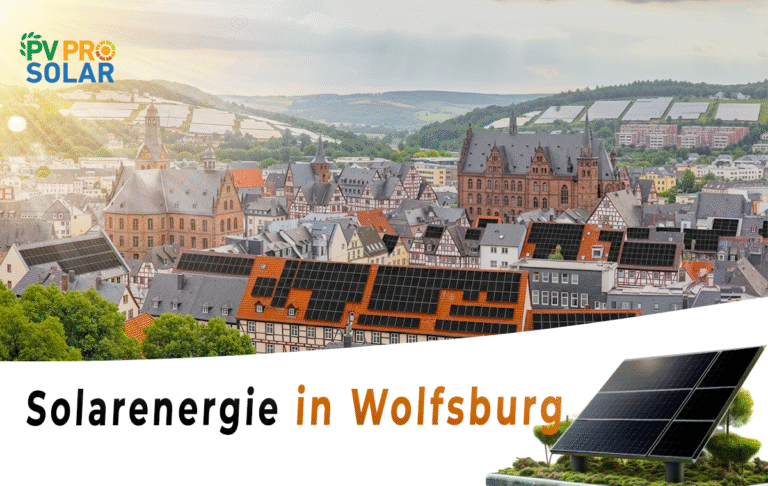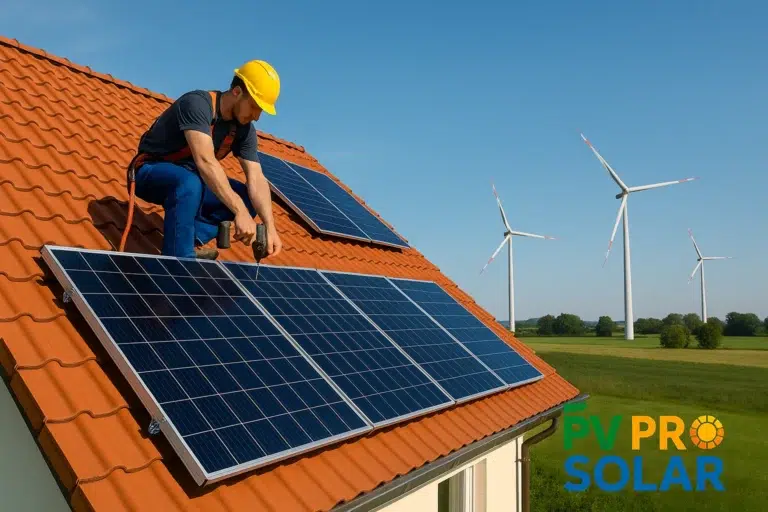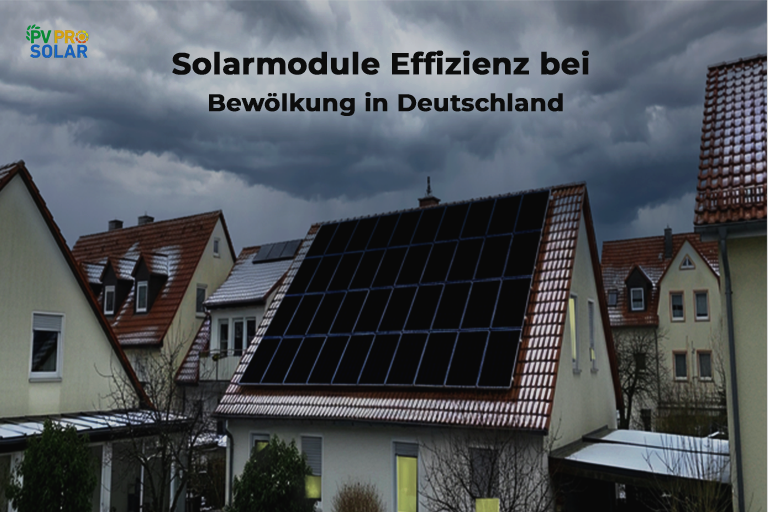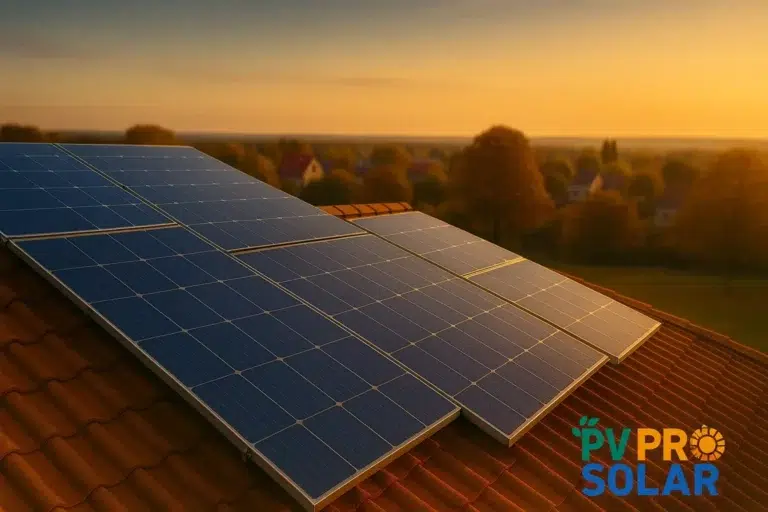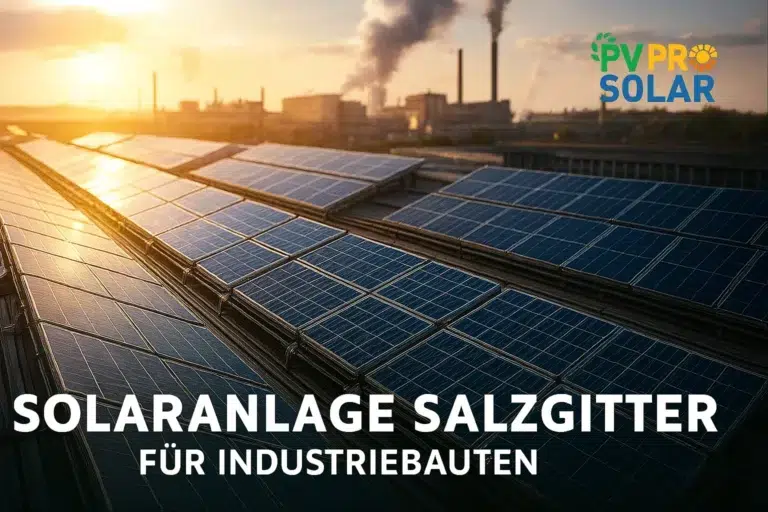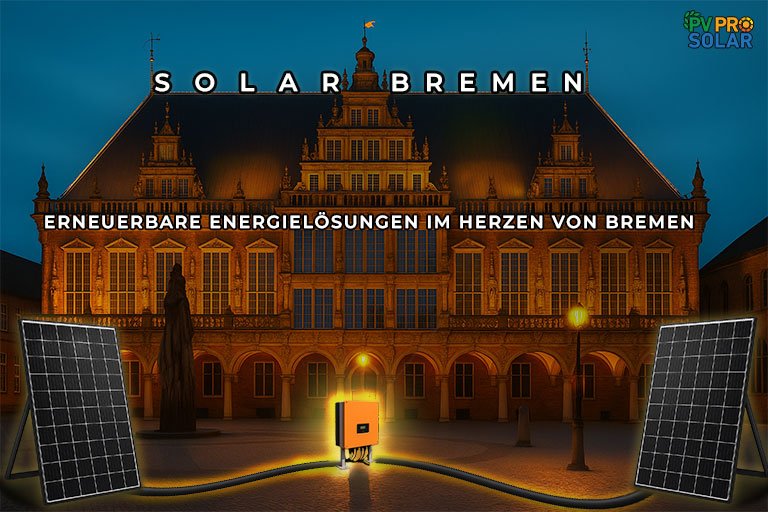Sloped Roof – Structure, Definition, and Its Importance for Modern Solar Systems
For centuries, the sloped roof has shaped the architectural landscape of Europe. It combines functionality, aesthetics, and efficiency into a single design. But in the era of renewable energy, the sloped roof has taken on a new, forward-looking role: it has become one of the most crucial factors in harnessing solar energy. Whether gently sloped, steeply pitched, or uniquely shaped, the angle of the roof directly impacts energy yield, construction methods, and the durability of the building.
What is a Sloped Roof? – Definition and Characteristics
By definition, a sloped roof is a roof whose surfaces are inclined at a specific angle relative to the horizontal. These angled surfaces allow rainwater and snow to naturally drain off—an obvious advantage over flat roofs.
The term “sloped roof” refers broadly to any roof with an incline between approximately 5° and 60°, though the specific angle can vary depending on materials, climate, and architectural style.
In construction, sloped roofs are further categorized as follows:
- Low-slope roofs: Inclination between 5° and 22°
- Medium-slope roofs: Inclination between 22° and 45°
- Steep-slope roofs: Inclination over 45°
Each of these variants comes with its own requirements in terms of materials, waterproofing, and load-bearing capacity.
Structure of a Sloped Roof – From Load-Bearing Frame to Roofing
The construction of a sloped roof follows a well-defined layering system. From the interior to the exterior, it consists of several components that together provide structural integrity, insulation, and weather protection.
- Load-bearing structure: Usually made of wood or steel, this forms the structural backbone.
- Underlayment or sheathing: Protects against moisture and wind.
- Thermal insulation: Key to energy efficiency and indoor comfort.
- Battens: Serve as the foundation for the roof covering.
- Roofing: Tiles, slate, or metal panels—depending on design and climate.
In low-slope roof constructions, waterproofing is particularly critical. Bitumen sheets, roofing membranes, or metal panels are commonly used to prevent water ingress.
Concrete sloped roofs are often found in modern buildings or large industrial halls. Concrete offers excellent load-bearing capacity and fire resistance, but is heavier and requires a reinforced substructure.
Sloped Roof in Detail – Efficiency and Thermal Protection
The finer details of a sloped roof determine the building’s overall energy performance. Small technical elements—such as insulation thickness or ventilation between roof layers—can significantly affect both durability and energy efficiency.
Modern sloped roofs with advanced insulation systems can dramatically reduce heat loss in winter and minimize heat gain in summer.
Architects often favor low-sloped, steep roofs as they provide clean, elegant lines while offering space for solar panels or skylights. They also make it easier to incorporate green roofs or solar green roofs due to the gentler slope.
Low-Slope Roof – The Modern Evolution of a Classic Design
A low-slope roof represents the modern reinterpretation of traditional roofing styles. It combines the advantages of flat roofs (easy maintenance, clean lines) with those of steep roofs (better drainage, longer lifespan).
By definition, low-slope roofs incline between 5° and 22°, making them particularly attractive for modern homes, commercial buildings, and solar installations.
Roofing options for low-slope roofs include metal sheeting, bitumen, slate, or specialized roof tiles. The key is to use water-resistant materials since the lower angle increases the risk of water pooling.
A well-planned low-slope roof construction ensures optimal waterproofing, insulation, and structural stability.
What Roof Pitch Is Possible and Practical?
The appropriate roof pitch depends heavily on the intended use and roof type. For traditional tiled roofs, a minimum pitch of 22° is recommended. However, modern materials such as metal panels or bitumen can be used starting at just 5°.
For solar systems, the pitch is particularly important:
- In Germany, the ideal roof angle for solar panels is between 25° and 35°, depending on geographic location.
- Roofs that are too flat lose efficiency in winter, while overly steep roofs may underperform in summer.
Sloped roofs allow solar technology to be precisely angled to maximize sun exposure and energy yield.
Sloped Roof and Photovoltaics – A Perfect Match for Maximum Solar Yield
For homeowners and businesses alike, the sloped roof is the perfect base for a photovoltaic system. Its natural incline promotes self-cleaning of the modules, enables secure installation, and ensures high energy output.
PVPro Solar GmbH uses specialized mounting systems on sloped roofs to optimize the tilt angle for maximum efficiency. Even on low-slope roofs, solar mounts can be angled individually to achieve optimal positioning.
Benefits of sloped roofs for solar systems:
- Reduced maintenance thanks to the natural runoff of dirt and debris
- Better cooling of modules due to air circulation
- Longer lifespan of roof sealing
- Flexible arrangement of panel rows
Every sloped roof has the potential to become a sustainable energy source.
Established Roof Types and Their Specific Requirements
The most common roof shapes in Europe—gable roof, shed roof, hip roof, and pyramid roof—are all types of sloped roofs. Each has its own structural and waterproofing challenges:
- Gable roof: The classic choice. Ideal for PV systems facing south or southwest.
- Shed roof: A modern design with a single sloping surface—excellent for solar panels.
- Hip roof: More complex to build, but visually appealing and highly resistant to wind loads.
- Pyramid roof: Slopes equally on all sides—often used on pavilions or modern villas.
The choice depends on aesthetic preferences, local building codes, and intended energy use. A thoughtfully designed sloped roof detail is essential for long-lasting, efficient roof structures.
Low-Sloped Steep Roofs – The Future of Energy-Efficient Buildings
Low-sloped, steep roofs are playing a central role in contemporary architecture. They offer spacious interiors, reduce wind loads, and simplify the integration of solar panels and skylights.
When combined with green roofs or heat pump systems, they are considered highly sustainable and future-ready.
The trend is moving toward multifunctional roofs that not only protect but also actively generate energy. Paired with solar storage and smart energy management systems, the sloped roof becomes the cornerstone of an energy-independent home.
Why the Sloped Roof Is the Most Sustainable Choice?
A sloped roof is far more than an architectural feature—it’s a key component of modern energy efficiency.
Thanks to its angled surfaces, it offers ideal conditions for solar power, rainwater harvesting, and thermal insulation. Backed by decades of experience in design and construction, it remains the most established roof form for both residential and commercial buildings.
Whether it’s a concrete or wooden sloped roof, covered in slate, tiles, or metal, those who prioritize sustainable construction and energy independence are making a long-term smart investment.
The Sloped Roof as a Future Standard of the Energy Transition
A sloped roof elegantly combines tradition and technology. It’s durable, versatile, energy-efficient, and provides the perfect foundation for solar technology. Whether gently sloped, steep, or part of a hybrid design, the right construction and precise planning will determine both lifespan and energy performance.
If you’re considering using your roof for solar energy, visit PVPro Solar GmbH – your reliable partner for photovoltaic systems on sloped roofs across Germany.
Request your consultation today and turn your roof into a source of energy!
The ideal pitch for solar panels on sloped roofs is between 25° and 35°, allowing for maximum sunlight capture and consistent energy output year-round.
Yes, using specialized mounting systems, solar modules can be individually angled on low-slope roofs to ensure optimal energy production. What is the optimal roof angle for solar systems?
Can a solar system be installed on a low-slope roof?


